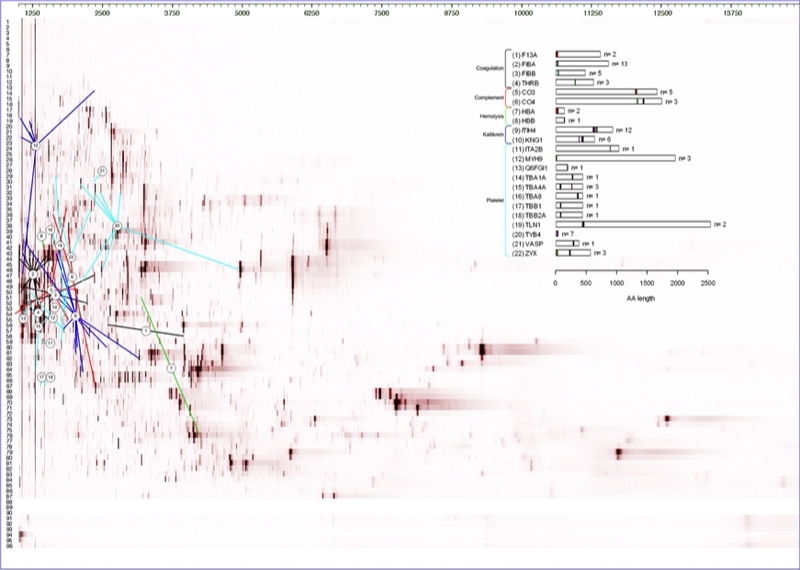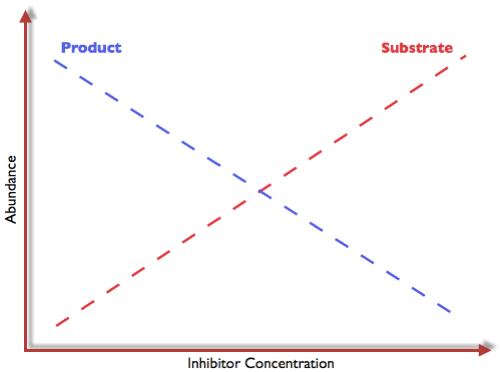Services and Products
Most Proteomic technologies deliver peptides using a top-down approach, and to do so utilize chemical digestion that introduces a bias from the start, thus limiting the body of information and artificially introducing peptides. PXBiovisoN’s peptidomics technology builds from the bottom-up starting with sophisticated separation technologies to elucidate the peptidome.
This page provides a brief summary of our services and products:
This page provides a brief summary of our services and products:
Sample Preparation - Enrichment of Low Molecular Weight Components from Complex Mixtures
Whether you are isolating a putative diagnostic biomarker or drugs under the scrutiny of the FDA/EMEA or PMDA, PXBioVisioN delivers superior isolation of small molecules. From its uncompromising pursuit of the endogenous peptidome, PXBioVisioN works with you to deliver your analytes of interest with the highest concentration and resolution.

The sample preparation service offers enrichment solutions for low molecular analytes. With a more than 95% or 99% of total protein removal, sample volumes between 100 microliter and 1 milliliter can be explored. In addition to body fluids like blood plasma, serum, urine, CSF or synovial fluid, the unique approach can be applied to tissues and cell culture.
To learn more follow this link.
Sample Quality Assessment - Determination of Sample Quality
You spend thousands on the acquisition and storage of samples every year, and the quality of a sample is tantamount to every therapeutic and diagnostic program. PXBioVisioN has leveraged its deep knowledge of peptide biomarkers reflecting sample quality to bring you Sample Quality Assessment (SQA).
The determination of sample quality is an important issue to ensure validity of results. Particularly in the field of multiplex assays it is a prerequisite for effective study outcomes. Preanalytic procedures can significantly alter the results derived from the analysis of blood-derived samples, especially by introducing unwanted systematic biases, which could lead to increased false positive findings. These procedures comprise the processes prior to the actual analysis of the sample and include steps needed to obtain the primary sample (e.g. blood) and to obtain the analytical specimen (e.g. plasma, serum, cells).
PXBioVisioN’s SQA analysis provides immediate return on investment as you leverage the information of your plasma or serum samples to screen, monitor, and adjust for better sample quality.
SQA provides immediate feedback so that you can:
The determination of sample quality is an important issue to ensure validity of results. Particularly in the field of multiplex assays it is a prerequisite for effective study outcomes. Preanalytic procedures can significantly alter the results derived from the analysis of blood-derived samples, especially by introducing unwanted systematic biases, which could lead to increased false positive findings. These procedures comprise the processes prior to the actual analysis of the sample and include steps needed to obtain the primary sample (e.g. blood) and to obtain the analytical specimen (e.g. plasma, serum, cells).
PXBioVisioN’s SQA analysis provides immediate return on investment as you leverage the information of your plasma or serum samples to screen, monitor, and adjust for better sample quality.
SQA provides immediate feedback so that you can:
- Adjust Procedures and Protocols of sample acquisition
- Adjust or update acquisition materials
- Adjust Handling and Storage requirements
- Grade and Categorize samples for best use
- Evaluate stored samples to determine whether to keep or destroy

Peptides as products of proteolytic cleavage events exhibit a close connection to protease activity. Increased or altered activity of proteases during sample collection, specimen generation, sample storage and processing are mirrored by alterations in abundance of specific peptides.Sample quality assessment by Peptidomics is a versatile tool to qualify biological specimens. The analysis of pre-analytical biases allow for characterization of samples, detection of outliers and recognition of erroneous sample handling procedures.
To learn more follow this link.
Pharmacopeptidomics - Monitoring Drug Effects In Vivo
The human genome contains more than 550 different proteases and peptidases, and also a considerable number of protease inhibitors. Very successful drugs have been launched based on protease inhibition. However, in many cases proteases do have more than the one substrate that is the target of drug development. Similarly, protease inhibitors may act on more than the target protease and can therefore induce undesired effects in the patient.
In vivo characterization of protease inhibitors by analyzing native peptides offers the possibility to determine the specificity of the inhibitor under physiological conditions. Analysis of peptides by Peptidomics allows to monitor protease activity in vivo and to describe the influence of protease inhibition.
No other technology can provide you more comprehensive information on your protease inhibitor. Whether you’re in a rat model or in humans, isn’t it worth knowing how your protease inhibitor is acting? Our bottom-up peptide profiling of the global peptidome delivers fast and affordable results so you can evaluate performance and make decisions.
In vivo characterization of protease inhibitors by analyzing native peptides offers the possibility to determine the specificity of the inhibitor under physiological conditions. Analysis of peptides by Peptidomics allows to monitor protease activity in vivo and to describe the influence of protease inhibition.
No other technology can provide you more comprehensive information on your protease inhibitor. Whether you’re in a rat model or in humans, isn’t it worth knowing how your protease inhibitor is acting? Our bottom-up peptide profiling of the global peptidome delivers fast and affordable results so you can evaluate performance and make decisions.

To learn more follow this link.
